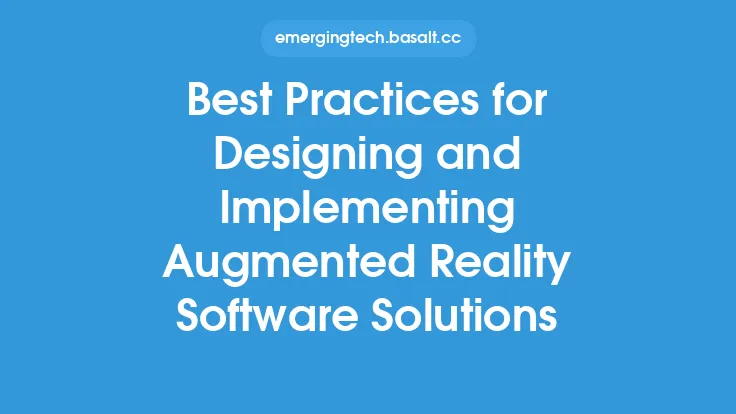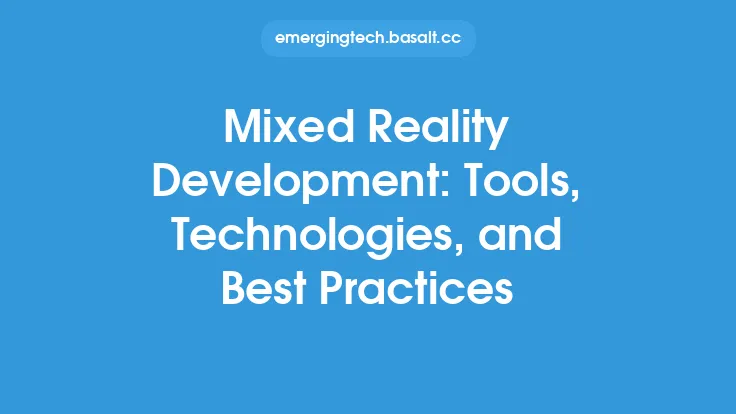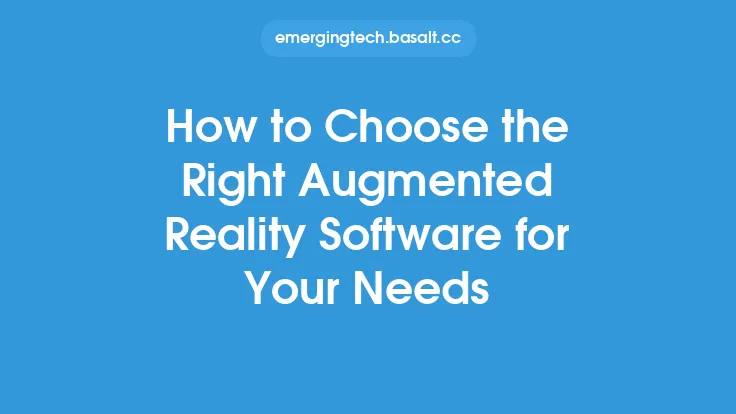The world of augmented reality (AR) has experienced significant growth in recent years, with a wide range of industries and applications benefiting from this innovative technology. At the heart of this growth are the software development tools and platforms that enable developers to create immersive and interactive AR experiences. In this article, we will explore the top AR software development tools and platforms, highlighting their features, capabilities, and use cases.
Introduction to AR Software Development Tools
AR software development tools are designed to help developers create, test, and deploy AR applications across various platforms, including mobile devices, smart glasses, and head-mounted displays. These tools provide a range of features, such as 3D modeling, animation, and physics engines, as well as software development kits (SDKs) and application programming interfaces (APIs) for integrating AR functionality into existing applications. Some popular AR software development tools include Unity, Unreal Engine, and ARKit.
Popular AR Software Development Platforms
Several AR software development platforms have gained popularity in recent years, offering a range of features and tools for creating AR experiences. Some of the most popular platforms include:
- Unity: A cross-platform game engine that supports AR development for mobile devices, smart glasses, and head-mounted displays.
- Unreal Engine: A powerful game engine that provides advanced features for creating high-quality AR experiences, including 3D modeling, animation, and physics engines.
- ARKit: A platform developed by Apple for creating AR experiences on iOS devices, providing features such as 3D modeling, animation, and physics engines.
- ARCore: A platform developed by Google for creating AR experiences on Android devices, providing features such as 3D modeling, animation, and physics engines.
- Vuforia: A platform that provides a range of tools and features for creating AR experiences, including 3D modeling, animation, and physics engines, as well as support for various platforms, including mobile devices and smart glasses.
AR Software Development Frameworks
AR software development frameworks provide a set of pre-built components and tools for creating AR experiences, allowing developers to focus on the creative aspects of AR development. Some popular AR software development frameworks include:
- AR.js: A JavaScript framework for creating AR experiences on the web, providing features such as 3D modeling, animation, and physics engines.
- A-Frame: A framework for creating AR experiences on the web, providing features such as 3D modeling, animation, and physics engines, as well as support for various platforms, including mobile devices and smart glasses.
- React AR: A framework for creating AR experiences on mobile devices, providing features such as 3D modeling, animation, and physics engines, as well as support for React and React Native.
Tools for Creating AR Content
Creating high-quality AR content requires a range of tools and software, including 3D modeling and animation software, as well as tools for creating and editing AR experiences. Some popular tools for creating AR content include:
- Blender: A free, open-source 3D creation software that provides features such as 3D modeling, animation, and physics engines.
- Maya: A commercial 3D computer animation, modeling, simulation, and rendering software that provides features such as 3D modeling, animation, and physics engines.
- SketchUp: A 3D modeling software that provides features such as 3D modeling and animation, as well as support for various platforms, including mobile devices and smart glasses.
AR Software Development Kits (SDKs)
AR SDKs provide a set of pre-built components and tools for creating AR experiences, allowing developers to integrate AR functionality into existing applications. Some popular AR SDKs include:
- Google AR SDK: A platform developed by Google for creating AR experiences on Android devices, providing features such as 3D modeling, animation, and physics engines.
- Apple AR SDK: A platform developed by Apple for creating AR experiences on iOS devices, providing features such as 3D modeling, animation, and physics engines.
- Microsoft AR SDK: A platform developed by Microsoft for creating AR experiences on Windows devices, providing features such as 3D modeling, animation, and physics engines.
Conclusion
The world of AR software development is rapidly evolving, with a wide range of tools and platforms available for creating immersive and interactive AR experiences. By understanding the features, capabilities, and use cases of these tools and platforms, developers can create high-quality AR applications that meet the needs of various industries and applications. Whether you are a seasoned developer or just starting out, the top AR software development tools and platforms provide a solid foundation for creating innovative and engaging AR experiences.





